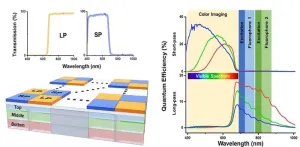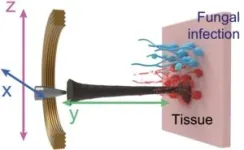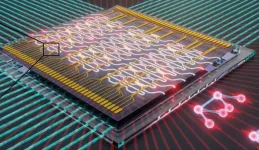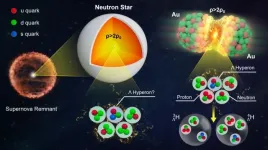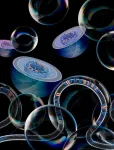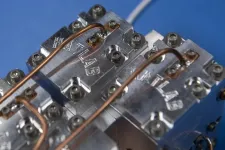(Press-News.org) For patients with solid cancers, endoscopic surgery is one of the primary treatment options to remove tumors. However, there is a high risk of cancer recurrence if even a small number of cancerous cells are left behind after surgical resection. To prevent this from happening, researchers developed fluorescence-guided surgery (FGS). In FGS, patients are injected with a fluorescent probe that preferentially binds to tumor cells, enabling surgeons to easily identify lesions with the help of specialized endoscopes that emit the necessary excitation light.
Unfortunately, tumors can be highly heterogeneous, and a single fluorescent probe is not enough to detect them all. Thus, one of the frontiers in FGS is using cocktails of multiple fluorescent probes (a.k.a. “tracers”) to detect a wider range of tumors, as well as to reduce false positives and negatives. Despite some progress in this direction, clinically approved endoscopes are all optimized to detect only a single tracer. Moreover, multi-tracer instruments currently under development are bulky because they require multiple imaging sensors and optical components.
In a study recently published in Journal of Biomedical Optics (JBO), a research team from University of Illinois Urbana–Champaign reported a novel endoscopic imaging system whose design could greatly accelerate the adoption of multi-tracer FGS.
At the heart of this design lies an innovative hexa-chromatic bioinspired imaging sensor (BIS), which the researchers modeled based on the visual system of the mantis shrimp. The sensor consists of three layers of vertically stacked photodetectors covered with a checkerboard-like arrangement of two different filters; one filters visible light and the other filters near-infrared (NIR) light.
The result is a single-chip camera that can effectively capture light on six different spectral channels, thereby making it capable of detecting even the most subtle differences in fluorescence emission from the tissue being imaged. To put its performance into perspective, this BIS can differentiate fluorescent tracers with emission peaks that are just 20 nanometers (nm) apart. Such a feat is not possible with current clinically approved imaging instruments.
To be able to use the BIS effectively, the researchers also had to design an appropriate excitation light source for activating the fluorescent tracers. To this end, they used custom bifurcated optical fibers connected to three independent light sources—a white LED and two NIR lasers at 665 and 785 nm. The researchers coupled the combined output of the fibers at the start of the rigid endoscope. In this way, by using a single imaging sensor and a single light input, they made the device less bulky than other multi-tracer imaging systems.
The researchers conducted characterization and benchmarking tests to determine the spatial resolution and sensitivity of the device. In addition, they performed in vivo experiments on a mouse model for breast cancer. These mice were injected with a 680-nm tracer, an 800-nm tracer, or an equal mixture of the two. The proposed system could clearly differentiate between the fluorescence signatures produced by the individual tracers and the mixture.
Aiming to showcase the clinical potential of their endoscope, the researchers used it to image lung cancer nodules that had been just removed from patients. Although these patients had only been injected with one fluorescent tracer, the proposed device was still capable of accurately distinguishing malignant nodules from healthy tissue.
Overall, the researchers achieved important engineering breakthroughs that will pave the way to the adoption of multi-tracer FGS. Thanks to its higher spatial resolution and its remarkable capacity to detect small variations in fluorescence emission, the proposed endoscopic imaging system will help doctors detect smaller or otherwise hidden tumors more easily.
With any luck, this will improve the long-term survival of patients with operable cancer.
Read the Gold Open Access article by M. B. George et al., “Bioinspired color-near infrared endoscopic imaging system for molecular guided cancer surgery,” J. Biomed. Opt. 28(5), 056002 (2023), doi 10.1117/1.JBO.28.5.056002.
END
Innovative endoscopic imaging system can detect multiple fluorescent tracers
Powered by a bioinspired imaging sensor, this system will lead to more accurate fluorescence-guided cancer surgery
2023-05-26
ELSE PRESS RELEASES FROM THIS DATE:
CHOP researchers show that IgA fine tunes the body’s interactions with microbes
2023-05-26
Philadelphia, May 26, 2023—IgA deficiency is the most common primary immune deficiency worldwide, but its presentation has puzzled physcians and researchers. Some with the disorder present with symptoms like recurrent infections, autoimmune disease, or allergies, whereas others have no symptoms at all and only become aware of their IgA-deficient status through an incidental finding on a blood test. This variability has raised the question among researchers: Why aren’t many of those with IgA deficiency sicker?
A new study by researchers at Children’s ...
Protein-based nano-‘computer’ evolves in ability to influence cell behavior
2023-05-26
HERSHEY, Pa. — The first protein-based nano-computing agent that functions as a circuit has been created by Penn State researchers. The milestone puts them one step closer to developing next-generation cell-based therapies to treat diseases like diabetes and cancer.
Traditional synthetic biology approaches for cell-based therapies, such as ones that destroy cancer cells or encourage tissue regeneration after injury, rely on the expression or suppression of proteins that produce a desired action within a cell. This approach can take time (for proteins ...
Gene therapy rescues hearing for the first time in aged mouse models
2023-05-26
By 2050, one in 10 individuals are expected to live with some form of hearing loss. Of the hundreds of millions of cases of hearing loss affecting individuals worldwide, genetic hearing loss is often the most difficult to treat. While hearing aids and cochlear implants offer limited relief, no available treatment can reverse or prevent this group of genetic conditions, prompting scientists to evaluate gene therapies for alternative solutions.
One of the most promising tools used in these therapies—adeno associated virus (AAV) vectors—has galvanized the hearing-loss community in recent years. ...
The mechanisms behind swallowing
2023-05-26
Sensory cells in the vagus nerve can detect and locate food in the esophagus. Their signals help transport the food onward to the stomach. Signal failure leads to swallowing disorders, say a team led by Carmen Birchmeier at the Max Delbrück Center. They have published their findings in “Neuron.”
Swallowing disorders can have many causes, and they occur more frequently in older people. But neurological diseases such as multiple sclerosis and Parkinson’s disease, and certain medications, can also prevent food moving normally from mouth to stomach. Possible consequences include malnutrition, weight loss, and dehydration.
Now a team led ...
Life through rose-coloured glasses
2023-05-26
Over thousands of years some animals have specialised to live in environments where the sun never shines: giant squid with eyes the size of volleyballs see even in the darkest depths while others, like cave-dwelling olms, have lost the functionality of their eyes completely. But for animals that do not live in these extremes, how do species manage a world that suddenly becomes dark? Lakes that become turbid from algal blooms, agricultural run-off, or other environmental pollutants represent common examples of environmental disturbances that can impact the visual scene that ...
Promising building blocks for photonic quantum simulators
2023-05-26
Researchers at the Niels Bohr Institute have, collaborating with the University of Münster and Ruhr-Universität Bochum, developed new technology capable of processing the enormous amounts of information quantum systems generate. Deterministic single photon light sources, creating quantum bits at extreme rates and speed are now coupled to specially designed, integrated photonic circuits, capable of processing quantum information with adequate speed and quality without degrading the susceptible quantum states. This means that the first steps have been taken towards the development of photonic quantum devices that can, for example, ...
First measurements of hypernuclei flow at RHIC
2023-05-26
UPTON, NY—Physicists studying particle collisions at the Relativistic Heavy Ion Collider (RHIC) have published the first observation of directed flow of hypernuclei. These short-lived, rare nuclei contain at least one “hyperon” in addition to ordinary protons and neutrons. Hyperons contain at least one “strange” quark in place of one of the up or down quarks that make up ordinary nucleons (the collective name for protons and neutrons). Such strange matter is thought to be abundant in the hearts of neutron stars, which are among the densest, most exotic objects in the universe. While blasting off to neutron stars to study ...
When the cell digests itself: How inherited neurodegenerative diseases develop
2023-05-26
FRANKFURT. A tangle of pockets, tubes and sac-like membrane structures runs through the cells of humans, animals, plants and fungi: the endoplasmic reticulum, or ER for short. In the ER, proteins are manufactured, folded into their three-dimensional structure and modified, lipids and hormones are produced and calcium concentrations in the cell are controlled. In addition, the ER forms the basis for the cellular transport system, feeds misfolded proteins to intracellular disposal and renders toxins that have entered the cell harmless.
In ...
Army funds two quantum-related projects at Pitt
2023-05-26
The U.S. Army has awarded more than $5.7 million for two projects led by Michael Hatridge, associate professor of physics and astronomy in the Kenneth P. Dietrich School of Arts and Sciences. Both projects bring together a diverse group of researchers to overcome roadblocks in the field of quantum computing.
A four-year, $2.67 million grant is aimed at the next generation of modular quantum computing systems. Hatridge and co-principal investigators Robert Schoelkopf of Yale University have each developed unique ...
Emergence of solvated dielectrons observed for the first time
2023-05-26
Solvated dielectrons are the subject of many hypotheses among scientists, but have never been directly observed. They are described as a pair of electrons that is dissolved in liquids such as water or liquid ammonia. To make space for the electrons a cavity forms in the liquid, which the two electrons occupy. An international research team around Dr. Sebastian Hartweg, initially at Synchrotron SOLEIL (France), now at the Institute of Physics at the University of Freiburg and Prof. Dr. Ruth Signorell from ETH Zurich, including scientists ...
LAST 30 PRESS RELEASES:
Tracing the quick synthesis of an industrially important catalyst
New software sheds light on cancer’s hidden genetic networks
UT Health San Antonio awarded $3 million in CPRIT grants to bolster cancer research and prevention efforts in South Texas
Third symposium spotlights global challenge of new contaminants in China’s fight against pollution
From straw to soil harmony: International team reveals how biochar supercharges carbon-smart farming
Myeloma: How AI is redrawing the map of cancer care
Manhattan E. Charurat, Ph.D., MHS invested as the Homer and Martha Gudelsky Distinguished Professor in Medicine at the University of Maryland School of Medicine
Insilico Medicine’s Pharma.AI Q4 Winter Launch Recap: Revolutionizing drug discovery with cutting-edge AI innovations, accelerating the path to pharmaceutical superintelligence
Nanoplastics have diet-dependent impacts on digestive system health
Brain neuron death occurs throughout life and increases with age, a natural human protein drug may halt neuron death in Alzheimer’s disease
SPIE and CLP announce the recipients of the 2025 Advanced Photonics Young Innovator Award
Lessons from the Caldor Fire’s Christmas Valley ‘Miracle’
Ant societies rose by trading individual protection for collective power
Research reveals how ancient viral DNA shapes early embryonic development
A molecular gatekeeper that controls protein synthesis
New ‘cloaking device’ concept to shield sensitive tech from magnetic fields
Researchers show impact of mountain building and climate change on alpine biodiversity
Study models the transition from Neanderthals to modern humans in Europe
University of Phoenix College of Doctoral Studies releases white paper on AI-driven skilling to reduce burnout and restore worker autonomy
AIs fail at the game of visual “telephone”
The levers for a sustainable food system
Potential changes in US homelessness by ending federal support for housing first programs
Vulnerability of large language models to prompt injection when providing medical advice
Researchers develop new system for high-energy-density, long-life, multi-electron transfer bromine-based flow batteries
Ending federal support for housing first programs could increase U.S. homelessness by 5% in one year, new JAMA study finds
New research uncovers molecular ‘safety switch’ shielding cancers from immune attack
Bacteria resisting viral infection can still sink carbon to ocean floor
Younger biological age may increase depression risk in older women during COVID-19
Bharat Innovates 2026 National Basecamp Showcases India’s Most Promising Deep-Tech Ventures
Here’s what determines whether your income level rises or falls
[Press-News.org] Innovative endoscopic imaging system can detect multiple fluorescent tracersPowered by a bioinspired imaging sensor, this system will lead to more accurate fluorescence-guided cancer surgery
